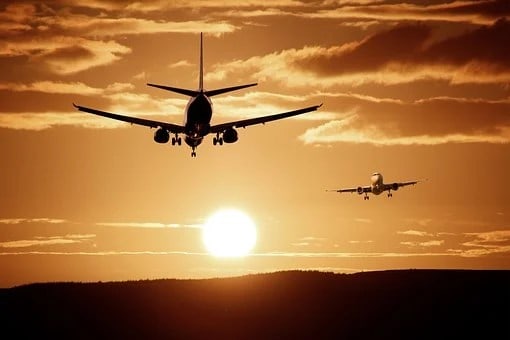Let’s face it: due to its location, size, and population, air travel inside and outside of Australia will always be costly. Historically, airfare in Australia has been pricey. This is just one of the numerous factors at play here, including the requirement of increased competition and the presence of a clientele prepared to pay higher prices.
Multiple search engines have revealed that international airfares from Australian cities have increased by almost 50% over pre-pandemic levels. In comparison, domestic airfares have increased by 16% during the same period.
Finder.com.au, a price comparison website, analysed Skyscanner and discovered that the average roundtrip ticket between Melbourne and London pre-pandemic cost $1,412, but by 2023, the average price had risen to $2,677.
While the continuous increase in jet fuel prices has slowed, restricted airline capacity, strong demand, and debt repayment contribute to the sky-high prices. Airlines were unprepared financially because of their high volume but low-yield business strategy before the COVID-19 pandemic. The trend has now flipped, and airlines are running large volumes with reduced capacity, allowing them to enhance their yield, resulting in huge profits.
Airline companies incurred huge losses between 2020 and 2022, forcing many of them to rely on government assistance to stay afloat; these companies have now had to rehire employees at higher salaries than before and repay the loans that kept them afloat. The current sky-high ticket prices reflect all of these issues.
How do we compare to Europe?
According to new data from the International Air Transport Association (IATA), European domestic travel is rising. Airfares inside Europe have increased below the continent’s average inflation, giving a silver lining despite economic woes.
Although IATA reports that European airfare increased by 16% in June 2019 compared to pre-Covid levels, this is still lower than the average inflation rate in Europe, which was 20% in the same period.
Airfares in 2023 started more than 20% higher than in 2019, but decreased significantly until June. Recent traffic data, however, indicates that passenger numbers dropped by just 3.6% from 2019 to 2020, demonstrating that Europeans are resilient in their desire to travel despite price constraints.
The director general of IATA, Willie Walsh, recently highlighted Europe’s strong air travel rebound and predicted that it will exceed the 2019 target by 2024. The competition in the airline industry, he said, is what has kept ticket inflation at 16% instead of the 20% shown in the CPI.
Walsh praised this success despite the high cost of aircraft fuel and rising wages. He did, however, voice his disappointment with the recent increases in airport fees at key European hubs such as London Heathrow and Amsterdam’s Schiphol.
Walsh said 20 new airlines have launched operations in Europe during the past year, contributing to a more competitive industry. He argued that fostering more airline rivalry will boost Europe’s economic competitiveness.
When will airline prices drop?
While increasing traffic indicates that the industry is on the path to financial recovery, international fares are unlikely to see significant reductions this year until either new routes are announced or special promotions are introduced.
With domestic capacity restored to pre-COVID levels and new market entrants like Rex and Bonza contributing to airfares reductions, domestic prices have settled to a fairer level.
There is still a strong demand for airline seats in Australia and across the world, so airlines don’t need to do much to adjust capacity, even on their most popular routes. Airfares are still primarily determined by the market and the demand size. Still, airlines have learned that relying only on enticing marketing campaigns to bring in customers is not sustainable.
International airfares in Australia, currently feeding off strong demand – notably from the leisure and visiting friends and relatives markets who are prepared to pay a premium to go – are only likely to come down until the market begins reactivating adversely to the levels.
The rising inflation will eventually cause consumers to tighten their belts, forcing airlines to implement corrective pricing measures in order to keep their load factors reasonably high, even though many consumers are still willing to pay higher airfares.
Adjustments are happening all over the world. For example, in Canada and the UK, capacity is already back to pre-pandemic levels (or near to it), and international airfares have plummeted. Qatar Airways has been lobbying the Federal Government to quadruple its services into Australia, and other airlines are similarly interested in finding ways around the current constraints to increase the number of flights into and out of Australia.
Remember that airlines have a right to a reasonable profit margin; nonetheless, customers want discounts, and airlines must strike a balance between satisfying those customers’ needs and ensuring their long-term viability.
We’ll unlikely to see the dirt-cheap airfares of before 2020 again, but savvy travellers may still find bargains. Destinations focused on international tourism usually give better value for money.
Some of the best opportunities to find a cheap international fare occur when a new route is announced, provided that the launching carrier has competition on this route and that their competitors react accordingly to their announcement.
Credit: Source link

